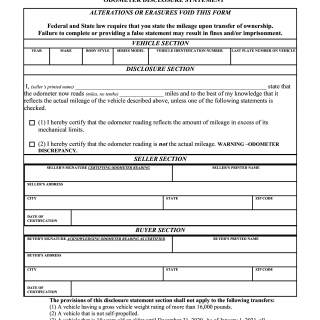Form MVR-180. Odometer Disclosure Statement
Form MVR-180 is the Odometer Disclosure Statement provided by the North Carolina Department of Motor Vehicles (DMV). This form serves an essential purpose in documenting the accurate mileage of a motor vehicle during the transfer of ownership. It ensures transparency and prevents fraud by disclosing the vehicle's actual mileage at the time of sale or transfer.
The form consists of several sections that require specific information. The important fields to be filled out include the vehicle identification number (VIN), the seller's name and address, the buyer's name and address, the date of sale or transfer, and the vehicle's mileage reading.
When filling out the form, it is crucial to provide accurate and truthful information. Parties involved, such as the seller and the buyer, should carefully review the mileage reading and verify its accuracy before signing the document. This helps to protect both parties from any potential legal or financial implications arising from an incorrect odometer reading.
Additional documents are not typically required when submitting this form. However, it is important to note that the DMV may request supporting documentation or evidence in case of any discrepancies or suspicion of tampering with the odometer reading.
Application examples and use cases for the MVR-180 form include private sales of used vehicles, transfers between family members, and changes in ownership due to inheritance or gifting. It is an essential requirement in these situations to ensure an accurate record of the vehicle's mileage.
An alternative form that serves a similar purpose is the federal Odometer Disclosure Statement (Form 729), which is used in states other than North Carolina. The main difference between the MVR-180 and the federal form is that the MVR-180 is specific to the state of North Carolina and must be used for vehicle transfers within the state.
The completed form can be submitted in person at a local DMV office or by mail to the address provided on the form. Once submitted, the form is stored in the DMV's database for record-keeping purposes and can be accessed when necessary.

